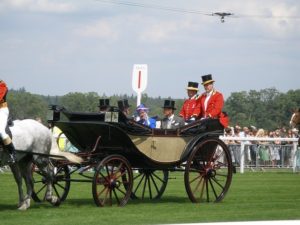When was the Lincoln Handicap last run at Lincoln Racecourse?
Inaugurated, as the Lincoln Spring Handicap Stakes, in 1853, when it was run over a mile-and-a-half, the race that would eventually become the Lincoln Handicap was shortened to a mile in 1855 and renamed the Lincolnshire Handicap four years later. Apart from interruptions for World War I and World War II, the race was staged at Lincoln Racecourse, on the Carholme, or West Common, west of Lincoln city centre, every year until 1964. At that point, the Horserace Betting Levy Board withdraw its subsidy from Lincoln Racecourse, causing its closure, and the newly-christened Lincoln Handicap was transferred permanently to Doncaster Racecourse.
From its inception until the advent of all-weather racing in 1989, the Lincoln Handicap traditionally marked the start of the Flat season. Nowadays, Flat racing is staged all year round, but in its heyday, in the interwar years, the Lincolnshire Handicap was one of the highlights of the year, attracting more interest than the whole of the Cheltenham Festival. Coupled with the Grand National, which was run within a week or so, as the so-called ‘Spring Double’, the Lincolnshire Handicap was phenomenally popular which, now that it has become just another handicap, is probably difficult for modern racegoers to imagine.
 Royal Ascot is, of course, a highlight of the British sporting and social calendar. Remarkably, though, as recently as 1999, the Royal Meeting featured just three highest category, Group One races. Those races were the St. James’s Palace Stakes, Gold Cup and Coronation Stakes.
Royal Ascot is, of course, a highlight of the British sporting and social calendar. Remarkably, though, as recently as 1999, the Royal Meeting featured just three highest category, Group One races. Those races were the St. James’s Palace Stakes, Gold Cup and Coronation Stakes. Timeform ratings first appeared in ‘Racehorses of 1947’, published in 1948, and ever since have provided a matter-of-fact means of comparing racehorses from different generations. Of course, it can be argued that ratings of any description, Timeform or otherwise, are simply a matter of opinion, but the findings make for interesting reading all the same.
Timeform ratings first appeared in ‘Racehorses of 1947’, published in 1948, and ever since have provided a matter-of-fact means of comparing racehorses from different generations. Of course, it can be argued that ratings of any description, Timeform or otherwise, are simply a matter of opinion, but the findings make for interesting reading all the same.